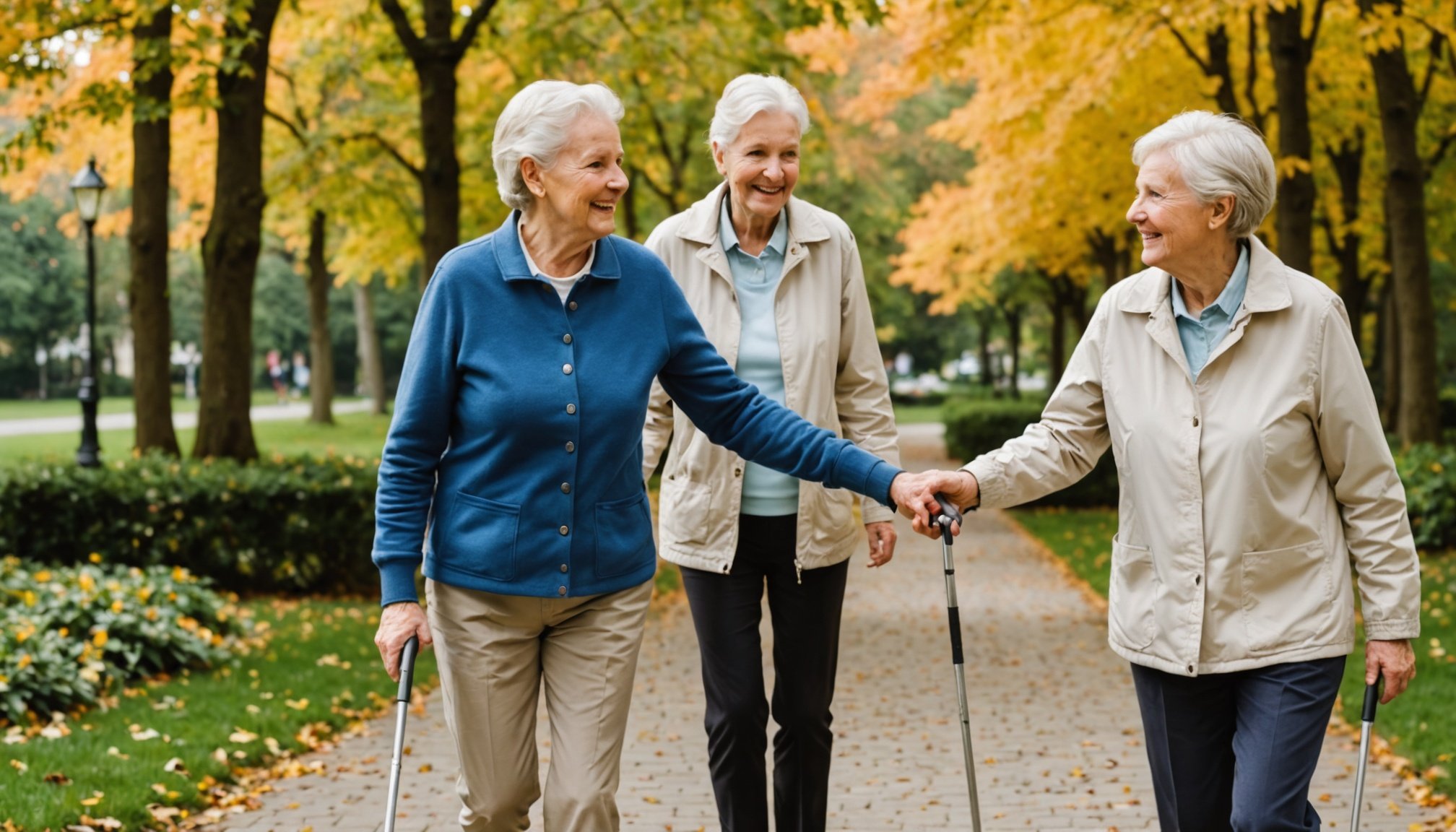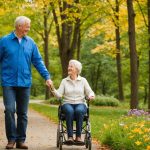Understanding Fall Risks in Seniors with Parkinson’s Disease
The increased fall risks associated with Parkinson’s Disease present significant challenges for seniors. These individuals face unique mobility challenges that can escalate fall risks, impacting their overall health and well-being. Understanding the factors that contribute to these falls is crucial in mitigating risks.
Experts have identified various factors that contribute to fall risks in seniors with Parkinson’s Disease, including impaired balance, slower reflexes, and cognitive changes. Additionally, Parkinson’s can cause muscle stiffness and tremors, further complicating mobility and increasing the likelihood of falls. Environmental hazards, such as uneven surfaces and poor lighting, also play a role in escalating these risks.
Topic to read : Essential Micronutrients for Boosting Skin Health in Seniors: A Comprehensive Guide
Statistics indicate that seniors with Parkinson’s are particularly vulnerable, with studies showing that this group experiences falls significantly more often compared to non-affected seniors. The impact of these falls can be severe, ranging from fractures to head injuries, leading to decreased independence and quality of life. Understanding these statistics underscores the urgency of addressing fall risks.
Addressing these challenges involves a multi-faceted approach, focusing on physical therapy, improving home safety, and medication management. Through awareness and proactive measures, the risks of falls in seniors with Parkinson’s Disease can be effectively reduced.
This might interest you : Unlocking the Secrets: Proven Strategies to Combat Seasonal Affective Disorder (SAD)
Environmental Modifications to Reduce Fall Risks
Creating a safe living environment is essential to prevent falls, particularly for seniors. Assessing and modifying one’s living space plays a crucial role in this process.
Assessing the Living Environment
Begin by evaluating every room for potential hazards. Look out for cluttered pathways, poor lighting, and unsecured carpets. Simple changes to home modifications can significantly enhance fall prevention.
Key Modifications for Safety
Consider implementing environmental safety measures like removing hazards and securing loose rugs. Replace slippery floors with non-slip surfaces and install handrails in stairways and bathrooms. These modifications not only ensure safety but also enhance the overall comfort of the home.
Utilizing Technology for Monitoring and Alerts
Modern technology offers innovative solutions like smart devices for monitoring and alerts. Devices with fall detection capabilities can notify caregivers in case of accidents. This proactive approach to fall prevention provides peace of mind to both seniors and their families. Additionally, utilizing technology such as automated lighting systems can reduce the likelihood of accidents in dimly lit areas.
Through these environmental safety efforts and home modifications, we can create a secure atmosphere that promotes safety and autonomy.
Effective Physical Exercises to Improve Stability and Strength
Addressing the needs of Parkinson’s patients, engaging in physical exercises specifically designed for balance training and strength improvement is crucial. Exercises that enhance balance and coordination are particularly beneficial, serving as a proactive measure for fall prevention.
Types of exercises include:
-
Balance exercises: Tai chi and yoga focus on controlled movements and postures, improving stability. Engaging in these exercises enhances muscle coordination and body awareness, integral to preventing falls.
-
Strength training: Weight-bearing activities like resistance band workouts or light weightlifting help increase muscle mass. Stronger muscles provide better support and stamina for daily activities.
-
Functional exercises: Activities mimicking everyday movements, such as stepping over objects or standing from a seated position, enhance agility and mobility, fortifying confidence and independence in daily life.
Regular physical activity not only boosts strength improvement but also augments overall functionality. This improvement manifests in enhanced mobility and increased self-assurance, pivotal for maintaining a higher quality of life. Creating a consistent regimen incorporating these exercises fosters a more active lifestyle, breathing vitality into everyday movements.
Assistive Devices and Technologies for Fall Prevention
In today’s world, assistive devices are an essential tool for enhancing mobility and preventing falls. These aids play a crucial role in improving the safety and independence of individuals, especially seniors. The variety of mobility aids available can significantly reduce the risk of injuries.
Types of Assistive Devices
There are numerous mobility aids designed to suit different needs, such as canes, walkers, and wheelchairs. Each device caters to varying degrees of stability and support requirements. Canes provide moderate assistance, while walkers offer more comprehensive support for balance and gait improvements. For individuals with more severe mobility challenges, wheelchairs might be the best choice.
Selecting the Right Device for Individual Needs
Choosing the appropriate assistive devices depends on the individual’s specific situation and physical condition. Factors to consider include the level of mobility, strength, and overall health. Consulting healthcare professionals can guide the optimal selection and ensure that the device meets the user’s requirements effectively.
Innovations in Fall Prevention Technologies
Recent advances in fall prevention technology have led to the development of wearable devices equipped with sensors that can detect falls and send alerts. These innovations represent the forefront of technology dedicated to enhancing safety and preventing falls in real-time.
Family and Caregiver Support Strategies
Family involvement and effective caregiver support are crucial in implementing fall prevention strategies. Caregivers play a significant role in ensuring that safety measures are consistently applied. For instance, caregivers and family members can collaborate to identify potential hazards at home and work on removing them, thus enhancing the home’s safety for seniors.
Clear and open communication is vital when discussing fall risks with seniors. Caregivers should approach these conversations gently, focusing on understanding and empathy. It’s important to emphasize the goal of maintaining the senior’s independence and safety without coming across as overly controlling or authoritarian.
Additionally, caregivers and families can benefit from joining resources and support groups specifically designed for those caring for seniors. These groups offer valuable insights and education on fall prevention, providing access to experienced professionals and peers who can share their experiences. Such communities often offer workshops or seminars that equip caregivers with practical skills to help mitigate fall risks.
Empowering both families and caregivers with education and support ensures a holistic approach to fall prevention, promoting a safe and nurturing environment for seniors while addressing the emotional and physical challenges that often accompany caregiving.
Case Studies and Expert Insights
Understanding the efficacy of fall prevention strategies for seniors with Parkinson’s often requires examining case studies and benefiting from expert recommendations. Successful interventions, tailored to specific needs, have been illustrated in various real-life examples. For instance, a case study involving a multidisciplinary team showcased a notable reduction in falls through targeted exercises and environment modifications.
Expert recommendations play a pivotal role in designing these interventions. Occupational therapists often emphasize home safety evaluations, suggesting alterations like removing tripping hazards and adding grab bars. Meanwhile, physiotherapists advocate for balance training and strength exercises, optimized based on individual capabilities. Their insights underscore the need for a personalized approach in fall prevention.
Practical applications derived from these insights are invaluable. Lessons learned from real-life experiences inform better strategies, allowing seniors to maintain independence and safety. For example, integrating technology such as wearable devices can offer real-time feedback on mobility, alerting both the individual and caregivers of potential risks. Together, these strategies highlight the benefits of combined interventions, proving essential for effective fall prevention.











